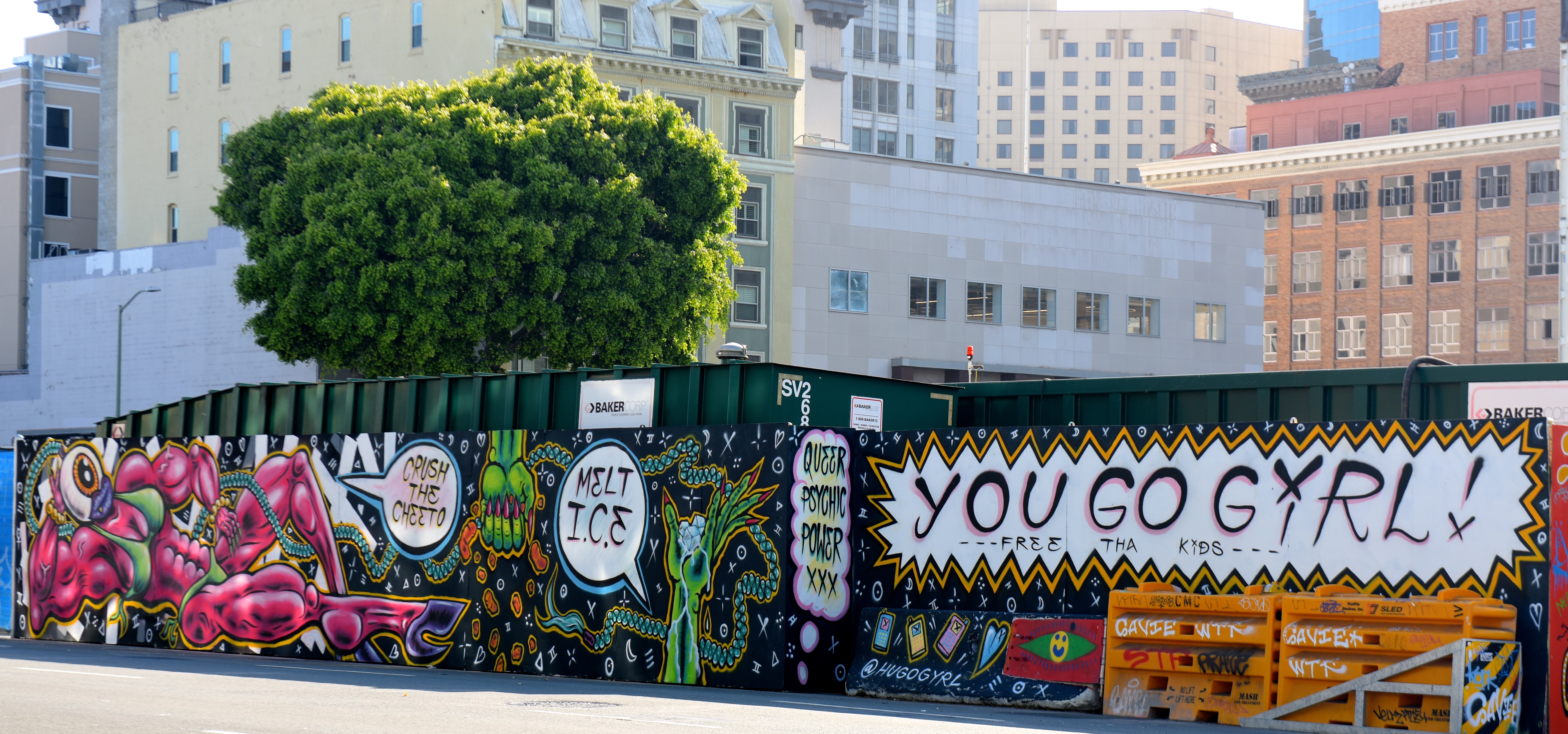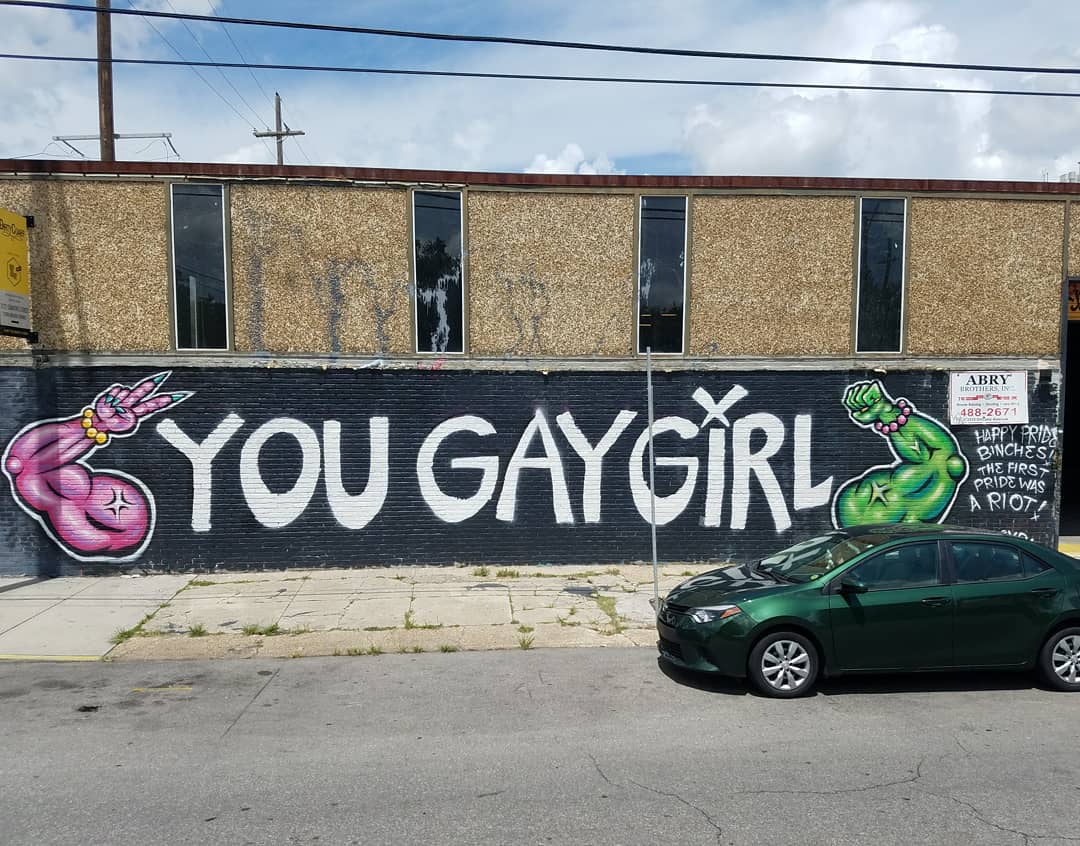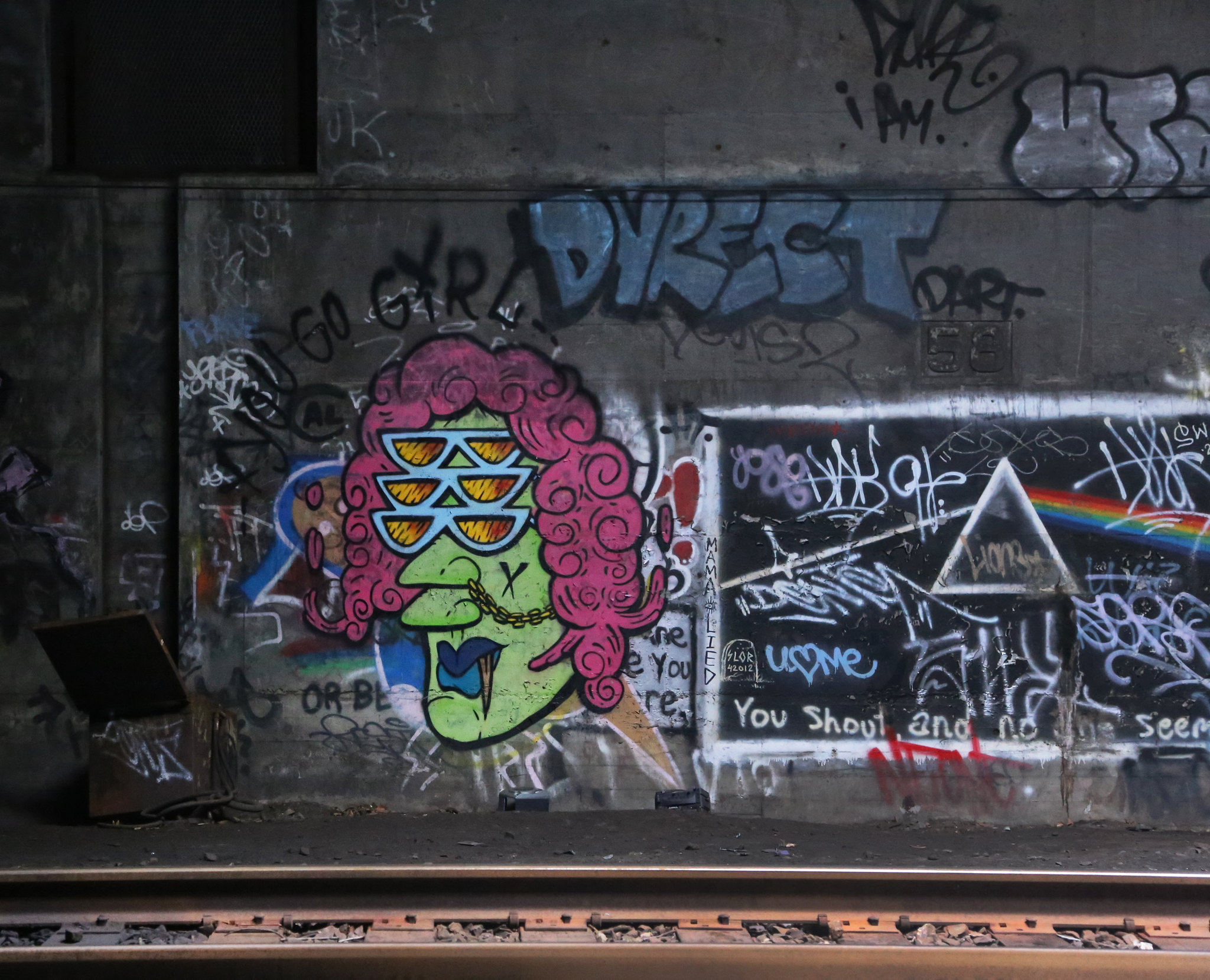Hugo Gyrl’s Queer Feminist Graffiti Keeps the Spirit of LGBTQ Rebellion Alive
Credit to Author: Taylor Hosking| Date: Wed, 19 Jun 2019 13:17:38 +0000
Hugo Gyrl is a Brooklyn-born queer graffiti artist based in New Orleans whose work reclaims public space for LGBTQ people and women, reminding viewers that queerness has always been tied to rebellion and fighting for visibility. In May, he announced via Instagram that he had been arrested for pasting illegal street art in Brooklyn—while simultaneously celebrating his art’s presence in the Brooklyn Museum exhibit, “Nobody Promised You Tomorrow: Art 50 Years After Stonewall.” He shared that he spent the night in jail and had to pay a $120 fine, but concluded, “I know that I am one lucky freak and am not going to let the law get my spirit down.”
Gyrl’s signature style uses green witch hands and phrases like “You Go Girl” to create a queer feminist visual world of fly, sexual, superhero-esque witches. He started gaining attention in the graffiti world in the late 2000s, as he was tagging the images across New York and New Orleans (sometimes with the help of his friend who uses the pseudonym Reader), and now his art has touched countless streets around the world, from U.S. cities like San Francisco, Oakland, Chicago, Austin, Louisville, and St. Louis to international hubs like Mexico City, Berlin, Hong Kong, Tokyo and Bangkok. “I stood out [then] because of what I was writing. There weren’t a lot of positive messages in tagging back then,” Gyrl told VICE.

His screenprint in the Brooklyn Museum recreates a spray-painted work called “Know Your Power” that shows a green witch hand holding a brick in homage to the Stonewall Inn rioters who some believe threw bricks at police raiders in 1969. (A ribbon floating up around the arm reads, “The First Pride Was a Riot! Know Your Power.”)
VICE caught up with Gyrl to hear more about his philosophy for art and queer activism, and what it’s been like to champion visibility this Pride season. Our conversation has been edited for clarity and length.

VICE: How did you develop your signature style that incorporates green hands, and what does that symbolize for you?
Hugo Gyrl: I paint witch hands for a lot of reasons. They symbolize, well, witchcraft. I realized around 2009 that graffiti, and especially tagging, is similar to sigil magic—which is imbuing a symbol with meaning, drawing it repeatedly, focusing power into it. It’s complicated [laughs]. You tag as much as possible to give your name more power; Graffiti can also be a form of self-empowerment. Also, because queers of all genders were burned at the stake as witches, I wanted to use the cartoonish green witches of modern times, play into the stereotype, and have fun with it. I could probably write a book about my theories on all this.
How do you incorporate pro-LGBTQ and feminist messaging into your art, and why is that important to you?
I painted a piece in New Orleans that says “You Gay Girl,” which is pretty blunt. My tag is bluntly feminist and gay too. Visibility is key. I think as we grow up, it’s important to become the thing you saw missing. Being a queer guy doing graffiti growing up in New York was pretty uncomfortable. I didn’t fit in. There were no role models or people I could relate to, as far as queerness goes. I also wanted to be a pain in the ass and paint gay shit all over New York and the world as some kind of humorous revenge. Take that, graffiti bros.

How do you choose the locations that you like to paint on? Do you choose particular buildings or corners for a reason connected to the piece or your personal philosophy?
It really depends. In New York, it has a lot to do with personal histories and memories. As I travel, I shoot for visibility. It’s all about opportunities, when you can paint and get away with it.
I saw that you sometimes choose locations to paint where you’re technically not supposed to, even though some graffiti artists have pivoted to work largely on commissioned pieces. Is that an important part of your philosophy, to keep doing art in illegal places?
Yeah, I think of the saying, “the medium is the message.” Legal pieces inherently say less, as there was no risk in creating that work. But to see someone take the risk of arrest or falling to create? You’ve got to be crazy, brave, and mean what the fuck you are saying and doing. Both [legal and illegal places] are valid, but illegal work packs a punch. To me, taking risk in art is especially important now. For fun, beauty and politics.
Your piece in the Brooklyn Museum made the point that LGBTQ activism started as rebellion and as a form of vandalism. Has the 50th anniversary of the Stonewall Riots and conversations about corporate Pride made that idea more important to you this year?
Exactly. Pride has gotten corporate as hell, and more and more divorced from its roots. I’m not saying pride should be a riot every year. But these rainbow flag binches need to know that people before them fought for their comfort. It’s important to remind people who look down on Black Lives Matter or other groups that take direct action, that [those activists] are doing the same thing that won us some of the rights we have now. And the advertising around Pride is ridiculous. If I see another rainbow Crest toothpaste ad, I’m going straight. I doubt the board of Procter & Gamble cares if trans people are getting fair housing.
Do you have a favourite piece you’ve done or a piece with an interesting backstory to it?
This has to do more with the location, but it played out like a mystery novel. I went to a public arts high school in Manhattan, and had a drawing class one day where an unassuming substitute teacher in glasses walked in and slammed a large portfolio on the table. He said, “Ok class, we’re not drawing today—instead, we’re looking at some of mine.” He takes out these large charcoal drawings of homeless people living in the Freedom Tunnel––the Amtrak tunnel that leads north out of Manhattan [in Riverside Park in Harlem]. Lots of people lived there. It’s named after the graffiti writer Chris ‘Freedom’ Pape, who did massive spraypaint versions of classical paintings all up and down it. Back then, we would smoke weed and paint down there to avoid the residents. But our teacher showed us dark pictures of the homeless people who lived there sitting around fires, and humanized them with stories explaining what led some of them to live there. It left a major impression on me, and after that I would go down there to paint and bring food, alcohol, and water to whoever I ran into.
Years later, my sibling sent me a comic about the writer Freedom, because they knew I spent time in the tunnel. The story involved him painting, but also occasionally working as a courtroom sketch artist, and suddenly it clicked. I realized our substitute teacher was actually Freedom. I emailed Freedom, thinking maybe I was crazy, and he replied in an hour. He said I was the first to figure it out, and that he got fired from my high school after that day. But it felt great to tell him that he made an impact on at least one student that day. I always said it was the only class I remember from high school. Amazing to think in a city the size of New York, a coincidence, a comic, could connect two artists a generation apart.
Sign up for our newsletter to get the best of VICE delivered to your inbox daily.
Follow Taylor Hosking on Twitter and Instagram.
This article originally appeared on VICE US.